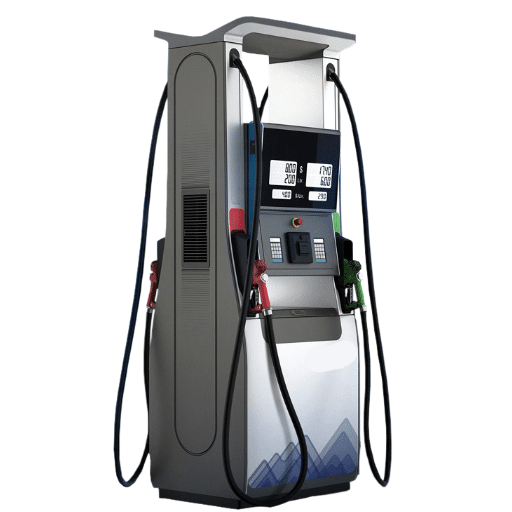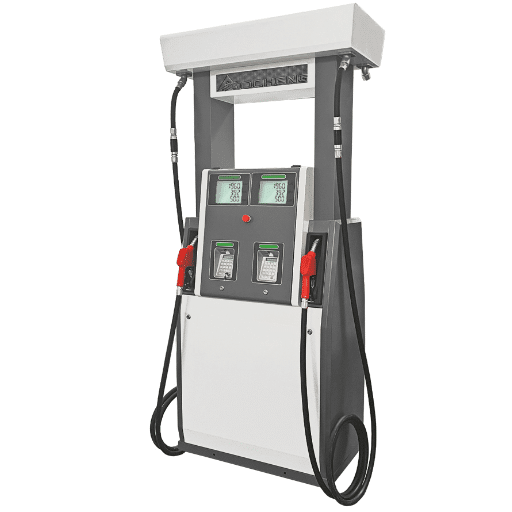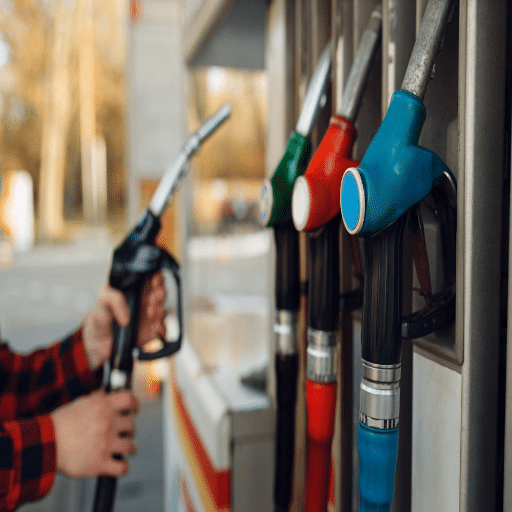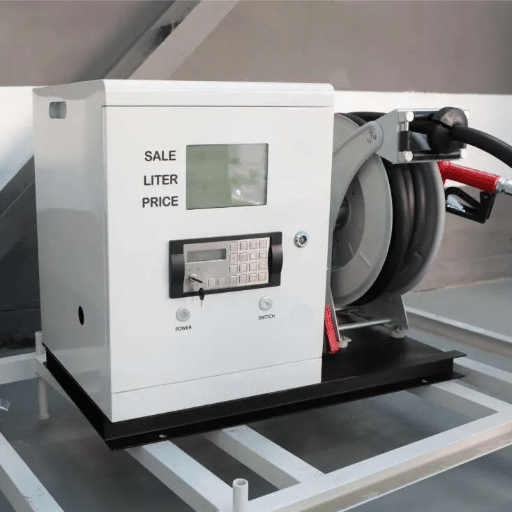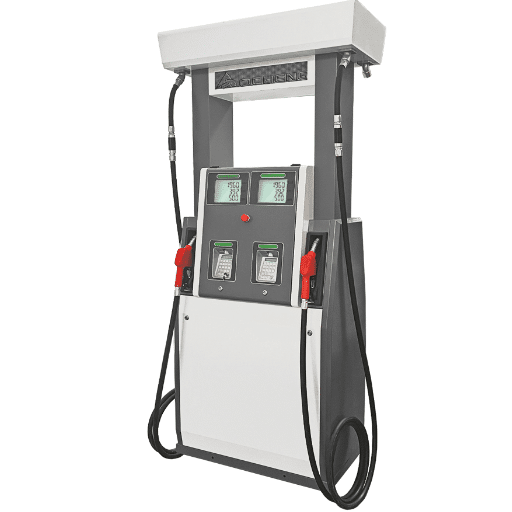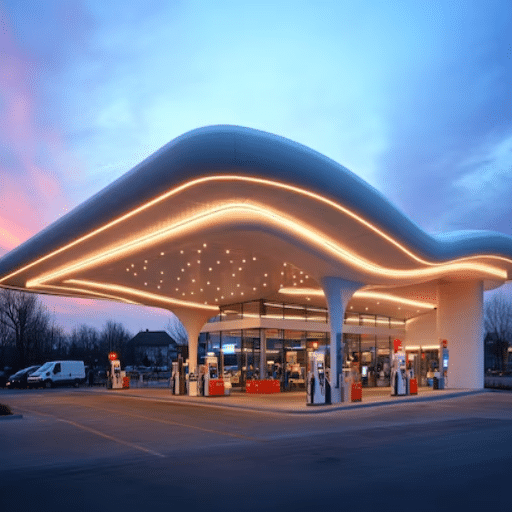In hazardous environments, safety is paramount, and lighting plays a crucial role in establishing a secure and productive working environment. With the oil and gas, chemical processing, and mining industries where fire or explosion is always a hazard, explosion-proof LED lighting has become a revolution. This specialized LED technology is designed to withstand the harshest conditions while ensuring that it poses no risk of igniting any flammable materials present in the atmosphere. In this article, we will discuss the properties, advantages, and applications of explosion-proof LED lighting, illustrating how it protects workers, enhances visibility, and meets stringent safety standards. Whether you’re upgrading your facility or simply want to understand why this innovation is so important, this blog will provide the answers you are looking for.
Understanding Explosion-Proof Lighting

The explosion-proof lighting fixture is designed for safe working within spaces where flammable gases, vapors, or combustible dust can exist. Enclosed by robust enclosures are these lights, which prevent any internal spark or heat from triggering an accident in the atmosphere. Designed to meet stringent safety standards, such as OSHA and ATEX, explosion-proof lighting eliminates any hazards to workers and ensures uninterrupted lighting in challenging conditions. They are ideal in an inclement environment; hence, they are in high demand in the oil and gas, chemical manufacturing, and mining industries.
What is Explosion-Proof Lighting?
The lighting in this regard shall be explosion-proof, so that any ignition sources do not come into contact with flammable substances in a hazardous environment. Unlike ordinary lights, these fixtures come with special enclosures that can contain sparks, heat, or any explosion that occurs inside the enclosure, so they cannot escape and ignite the surrounding atmosphere. The materials used for making heavy metals and thick-walled, reinforced glasses that can withstand impact, extreme temperatures, or corrosion.
Their lighting systems are rigorously tested to meet the standards issued by OSHA, ATEX, IECEx, and other relevant organizations. Lighting such as that which is ATEX-approved is divided into zonal classes, by which hazardous exposure hazards are defined. Zones 0 and 20 allow the operation of fixtures in the presence of explosive gases or dust in a continuous state, while Zones 1 and 21 apply in intermittent conditions.
Some innovations, such as explosion-proof lighting technology provided by LEDs, exist for multiple reasons. For one, LED fixture energy consumption is at least 50% less than that of incandescent or fluorescent fixtures. Secondly, their operational lifetime often exceeds 50,000 hours, which reduces maintenance downtime—a crucial consideration in industries such as oil and gas, chemical manufacturing, and food processing. Thirdly, LED lighting emits less heat, thereby decreasing the possibility of ignition.
With its advanced safety and efficiency, an explosion-proof light serves as the ultimate equipment for both worker safety and operational reliability in hazardous areas. Their continued evolution has led to the development of industries that rely on safe, durable, and energy-efficient illumination.
Importance of Explosion-Proof Light Fixtures
Explosion-proof light fixtures serve a vital function in ensuring safe operation with personnel present in highly explosive environments. The lights are intended to confine sparks, heat, or flames that might arise from within the fixture, thereby protecting such ignition from flammable gases, dust, or vapors present in the atmosphere.
Using information gathered from the industry, we have found that hazardous plants, such as oil and gas plants, chemical manufacturing plants, and mining areas, almost entirely utilize explosion-proof lighting due to the very rigorous safety codes in place. It is estimated that explosion-proof lighting accounted for as much as a $297 million market in 2023, and it is expected to continue growing at a steady pace due to an increased perception of industrial safety and the adoption of LED technologies in hazardous areas. These lighting fixtures are rugged enough to withstand harsh conditions and provide dependable lighting in extreme temperatures, corrosive atmospheres, or high-pressure environments.
Furthermore, explosion-proof lighting offers higher energy efficiency and operational cost savings, as these fixtures often combine the elements of contemporary LED technology, a highly energy-efficient type with a longer lifespan than traditional lighting. This combination of safety, durability, and efficacy makes explosion-proof lighting indeed a vital asset to any industry that prioritizes safety and, in turn, productivity.
How Explosion-Proof LED Lights Work
The explosion-proof LED lights operate using a strong and sealed housing that prevents any internal spark or explosion from igniting the surrounding hazardous atmosphere. These housings are made from sturdy, corrosion-resistant materials, such as aluminum or stainless steel, to provide longevity in extreme industrial conditions. The internal elements, including the LED chips and wiring, do not generate heat and do not pose the risk of arcing or sparking that could act as ignition sources.
In LED lighting, safety and efficiency enhancement are given the utmost importance. LEDs, lowering the capacity to heat up under dangerous conditions, generate less heat than red-hot incandescent or HID bulbs. Explosion-proof LED lights are energy-efficient, consuming up to 90% less energy than conventional alternatives. They typically run between 50,000 and 100,000 hours and therefore require fewer maintenance intervals, especially in hazardous environments such as chemical plants, offshore oil rigs, and mines.
Another essential aspect to consider when understanding how explosion-proof LED lighting works is the certifications and standards involved. They are tested to comply with safety standards, including ATEX, IECEx, and UL certificates for lighting in hazardous locations. In particular, the ATEX certificate ensures the light is safe in atmospheres with flammable gases or combustible dust.
Industrial-grade explosion-proof LED lights represent a product of utmost engineering prowess, strict standards, and tight safety parameters, providing efficient illumination technologies that reduce transformer lighting and high-risk capacities in hazardous environments.
Applications of Explosion-Proof LED Lighting
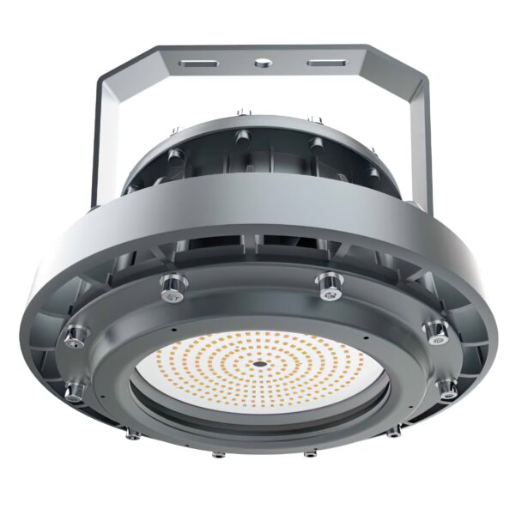
Explosion-proof LED lighting finds wide application throughout the industries for protection in hazardous environments. Typical applications include:
Oil and Gas Facilities: Installed in refineries and offshore platforms to prevent ignition of flammable gases.
Mining Operations: Used for underground illumination wherever combustible dust may be present.
Chemical Plants: Used to illuminate areas containing volatile substances safely.
Food Processing: Used in places where flour or sugar dust may become explosive hazards.
Manufacturing and Warehousing: Provide safe and durable lighting in locations of fire or explosion hazards.
The lights are crucial for maintaining safety standards compliance while providing reliable illumination in hazardous locations.
Hazardous Locations and Their Classifications
Explosion-proof LED lighting is commonly used in areas such as oil refineries, chemical plants, grain storage facilities, wastewater treatment plants, power generation plants, and mining sites.
|
Location |
Description |
Risk Type |
Key Factor |
|---|---|---|---|
|
Oil Refineries |
Processing crude oil |
Flammable gas |
High Temp |
|
Chemical Plants |
Handling chemicals |
Toxic & Flamm. |
Corrosive |
|
Grain Storage |
Storing grains |
Combustible |
Fine Dust |
|
Wastewater Plants |
Treating wastewater |
Gas Exposure |
Moisture |
|
Power Plants |
Energy generation |
Heat & Sparks |
Static Risk |
|
Mining Sites |
Extracting minerals |
Explosives |
Depth & Dust |
Lighting for Hazardous Areas: Key Considerations
Safety and working efficiency equally depend on correct lighting solutions for hazardous areas. Such environments may contain flammable gases, combustible dust, or corrosive materials, which is why more rigorous safety levels must be reached. Consider the following:
Explosion-Proof Design: Explosion-proof lighting is essential in areas prone to explosions, such as oil refineries and chemical plants. Such lighting is intended to prevent the ignition of anything inside the fixture and stops sparks or heat from exiting the fitting and lighting any hazardous material outside of it.
Ingress Protection (IP) Ratings: Higher IP-rated lighting fixtures are becoming the standard in hazardous areas subject to moisture, dust, or corrosive materials. IP66 or better ratings ensure protection against water and fine dust, making it suitable for wastewater plants or grain storage facilities.
Temperature Classification: Lighting fixtures must be able to withstand high temperatures and operate safely at or below these temperatures. According to explosion safety standards, the classifications from T1 to T6 indicate the maximum surface temperature that a lighting fixture can reach without igniting the surrounding materials. For power plants or typical mining sites, this consideration holds significant weight in preventing thermal-related accidents.
Energy-Efficient and Long-Lasting: LEDs continue to prevail in hazardous area lighting due to their resilience, low power input, and extremely long lifespan. A 2023 market study revealed that operational efficiency through LED lighting can increase by as much as 70% compared to conventional lighting in settings where operations are at a constant state.
Corrosion Resistance: For corrosive environments, such as chemical plants or offshore oil rigs, materials used for lighting fixtures typically include stainless steel or reinforced polymers. This would ensure longevity and lessen maintenance accruals.
Compliance with Standards: Compliance with standards is fundamental. Certifications such as ATEX (Europe), IECEx (International), or UL 844 (United States) are used to ensure that lighting fixtures meet specific safety regulations for use in hazardous locations.
By weighing these considerations and selecting lighting systems specifically designed for the individual risks of hazardous areas, industries can significantly enhance safety while minimizing potential downtime caused by accidents or equipment failure.
Use of LED Explosion-Proof Lighting in Various Industries
LED explosion-proof lighting enhanced for safety and cost efficiency is imperative in numerous industries. Explosion-proof lighting systems are typically used in areas where flammable gases, vapors, dust, or fibers are present, thereby maintaining safety while work is being conducted. Being remarkably versatile, the areas of application for these lighting systems are indeed numerous, each utilizing the benefits of this technology in a particular way.
1. Oil and Gas Industry: The oil and gas industry often operates in high-risk environments where explosive gases or vapors perch in the ambiance. The LED explosion-proof lights are designed for visibility during operational activities at a drilling rig, refinery, or offshore platform. Industry reports indicate that an LED may consume up to 50% less energy than traditional illumination, resulting in reduced operating costs over time. The long working life, often exceeding 50,000 hours, means less frequent replacement, which reduces maintenance hazards in these risky zones.
2. Chemical and Pharmaceutical Plants: Explosive substances handled in chemical and pharmaceutical firms can ignite under certain conditions. Explosion-proof LED lighting foils such risk by providing enclosures that prevent sparks or heat from entering into contact with the surrounding atmosphere. Studies indicate that these lighting systems enhance visibility during intricate manufacturing processes, while providing steady illumination levels necessary for maintaining quality control and ensuring workplace safety.
3. Mining Industry: Mines are challenging environments prone to flammable gases and dust. In such environments, explosion-proof LED lighting truly shines, acting as a drastic lighting solution that can withstand extreme conditions, including vibration, humidity, and dust exposure. LED improvements, therefore, have contributed to improved visibility in underground operations, making efficient work safer. Estimates show that better lighting in mines can improve operational efficiency by up to 25%.”
4. Food and Beverage Processing: Explosion-proof lighting is necessary in an environment that allows for combustible dust, such as flour mills, bakeries, and sugar refineries. Such lighting is designed to adhere to strict hygiene and safety standards; its surfaces can be easily cleaned and are resistant to corrosion due to frequent cleaning procedures. LED lights provide a uniform, clear light, which is essential for maintaining production standards and minimizing accidents.
5. Industrial Manufacturing: Explosion-proof LED lighting can immensely benefit general manufacturing facilities, especially those manufacturing with volatile substances like paints, solvents, or powdered metals. It is capable of fulfilling safety requirements and providing bright illumination for assembly line work and machinery-intensive operations. Studies show that the installation of LED-based lighting systems can slash electricity costs by roughly 40-60% compared to conventional incandescent or fluorescent systems.
LED-type explosion-proof lighting continues to transform the safety and efficiency aspects of various industries. Due to its ability to meet stringent safety requirements and deliver excellent lighting with guaranteed performance, it is a fantastic investment in hazardous environments. Through further development of LED technology, we can expect to see continued advancements in energy efficiency and operational safety within this industry.
Choosing the Right LED Explosion-Proof Fixture
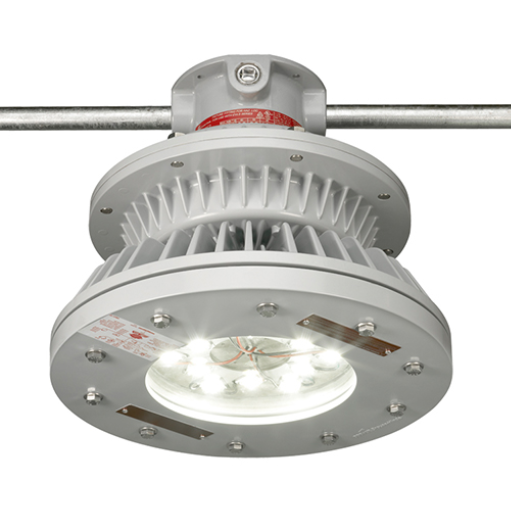
Some of these factors must be considered before purchasing LED explosion-proof lighting:
Hazardous zone classification: Your lighting fixture must meet the zone or division classification of your facility, such as Class I, II, or III, depending on the environment.
Lumens and Brightness: Select fixtures that deliver the required amount of daylight on site without compromising energy efficiency.
Durability and Materials: When exposed to harsh conditions, choose a fixture that is supported by high-quality materials, such as stainless steel or aluminum.
Certification: The required safety standards certifications, such as UL, ATEX, or IECEx, must be obtained by your location’s local requirements.
Energy efficiency: Consider the wattage consumption and lifespan of the LED to minimize operational costs.
Installation and Maintenance: Installation should be made easy to allow for faster setup, while maintenance should require minimal downtime.
You will be able to select among LED explosion-proof fixtures with those considerations in mind. You can be assured that the choice complies with the safety standards and operational conditions relevant to your setup.
Factors to Consider When Selecting Lighting for Hazardous Areas
When selecting hazardous location lighting, safety, robustness, and adherence to regulatory standards come first. These considerations, when detailed, assist in refining the selection process:
Hazardous Location Classification: Understand the classification of the location environment, such as Class I or Division 1, Zone 1, which identifies areas where potentially explosive gases, vapors, or dust may be present. This enables the proper selection of lighting fixtures certified for such classifications, preventing unintended ignition.
Temperature Ratings: The Temperature rating of the fixture should be suitable for the environment, where a high-temperature rating keeps the unit from reaching temperature levels that can ignite the flammable substances present in the area.
Ingress Protection Rating: Lighting fixtures with a high IP rating, preferably IP66 or IP67, should be selected to prevent ingress from dust, moisture, and water. This becomes particularly essential when the environment is constantly exposed to harsh weather conditions or washdowns.
Materials and Build Quality: Select materials such as stainless steel and aluminum that resist corrosion, impact, and chemical attacks, along with polycarbonate lenses. A well-made fixture would withstand harsh conditions, and even more importantly, it would ensure a longer operational life.
Energy Efficiency and Performance: The LED lighting fixture should produce the highest lumens per watt (lm/W) to consume the least energy while delivering bright light. An advanced LED fixture can now provide efficiencies of more than 150 lm/W, making it cheaper to operate than traditional lighting.
Certifications: Verify certifications such as UL, IECEx, ATEX, and CSA to ensure a product complies with industry safety and performance standards. These certifications ensure that the fixture has been tested for use in hazardous environments.
Maintenance Requirement: Fixtures featuring long-life LED lamps and modular components are preferred because they require the least maintenance. These features reduce downtime and increase productivity by minimizing interruptions to system operation during replacement or servicing.
Taking these essential aspects into account will make your choices safer while increasing the long-term reliability and cost-effectiveness of your lighting solution for hazardous areas. Always consider the application needs specifically to ensure alignment of lighting systems from both operational and regulatory perspectives.
Comparison of LED vs Traditional Explosion-Proof Lighting
Explosion-proof LED lighting offers energy efficiency, a longer lifespan, reduced maintenance, improved durability, and enhanced safety compared to traditional options, such as incandescent or fluorescent fixtures.
|
Key Point |
LEDs |
Traditional |
|---|---|---|
|
Efficiency |
High |
Low |
|
Lifespan |
>50,000 hours |
1,000-20,000 hours |
|
Maintenance |
Low |
High |
|
Durability |
High |
Moderate |
|
Safety |
Advanced |
Basic |
|
Heat Output |
Low |
High |
|
Initial Cost |
Higher |
Lower |
|
Energy Use |
Low |
High |
|
Light Quality |
Superior |
Variable |
|
Start Time |
Instant |
Delayed |
Benefits of LED Explosion-Proof Lighting
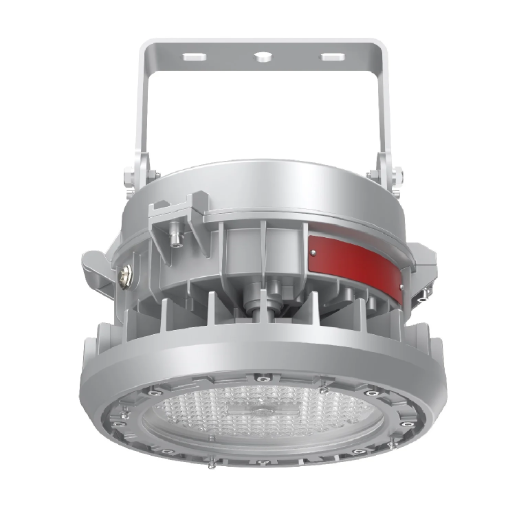
Some advantages of LED explosion-proof lighting over traditional lighting are:
Energy Efficiency: LED lights consume less electricity, thus saving power costs and enhancing environmental friendliness.
Longevity: LEDs operate for 50,000 hours or more, requiring less frequent replacements and resulting in reduced downtime and labor costs.
Low Maintenance: Due to their durability and long lifespan, maintenance is minimal.
Enhance Safety: LED protects advanced technology from heating up and disintegrating while working in hazardous environments.
Durability: Built to withstand harsh conditions, LED explosion-proof lights are highly resistant to impact, vibration, and environmental fluctuations.
Superior Lighting: LEDs produce better and more uniform light with instant startup, eliminating flickering —a requisite for critical operations.
Cost-Effectiveness: Following initial higher costs, LEDs become more economical options when considering long-term operational savings and reduced maintenance costs.
With all these bases covered, LED explosion-proof lighting becomes a suitable solution for challenging and high-risk working environments.
Energy Efficiency and Cost Savings
The LED explosion-proof lighting being considered here occupies a position at the pinnacle of energy efficiency, as it consumes significantly less power than conventional forms of lighting, such as incandescent or fluorescent types. According to recent studies, LED lighting appliances use up to 75% less energy and last up to 25 times longer than those using the incandescent method. This significant reduction in power consumption translates to lower electricity bills, a smaller carbon footprint, and a more sustainable path in favor of LEDs.
Some additional points focus on the longevity offered by the LED lights: the longer an item lasts, obviously, the less frequently it becomes necessary to replace it. Of course, a reduction in maintenance costs must be offset by an increase in washing cash flow. Now, in industrial terms, this means fewer stops and smaller labor expenses during lighting replacement, a necessary consideration where interruption to production must be avoided. For instance, a 24-hour industrial facility can save thousands of dollars every year by converting to energy-efficient LED lighting.
LEDs emit less heat than traditional lighting solutions, reducing the HVAC load in enclosed locations. This further paves the way for additional cost savings, especially in energy-intensive industrial setups. As the LEDs continue to evolve, with technologies such as intelligent lighting systems and dimming functions, businesses gain the opportunity to fine-tune energy consumption and, in turn, save more while strengthening the cost competitiveness of the LED solution.
Improved Safety and Longevity
LED lighting options offer significant advantages in terms of safety and durability, making them ideal for both commercial and residential applications. LEDs operate at much lower temperatures than traditional incandescent or fluorescent lights; accordingly, this lowers the chance of burn or fire hazard. These facilities are well-suited for any location where safety is paramount, such as children’s hospitals, schools, or warehouses.
Here, the LED is designed to confront various extreme environmental conditions, such as extreme temperatures, vibrations, or moisture, thus ensuring reliability in challenging environments. Ordinary lights, which have a lifespan of around 1,000 to 2,000 hours, and during that period, the adoption of LEDs with lifespans of 50,000 to 100,000 hours results in fewer replacements and, consequently, lower maintenance charges. The industry reports further mention that with this long lifespan, an LED can last more than twenty years if used for six hours a day, saving time and maintenance costs.
Furthermore, LED bulbs are constructed with durable materials and lack fragile filaments or glass parts, rendering them less prone to breakage. Smooth and safe environments, free from broken glass, can be ensured by this firm and sturdy design. In conjunction with modern technologies such as smart lighting controls and safety backup features, LEDs offer an efficient lighting solution that prioritizes safety and longevity.
Environmental Impact of LED Lighting Solutions
LED lighting solutions have a significantly greater positive environmental impact compared to traditional lighting systems. Among the counter-benefits is energy efficiency, with LEDs using as much as 75% less energy than incandescent bulbs, thereby lessening the electricity demand. This reduction in energy leads to lower utility charges and lower greenhouse gas emissions, as less energy is generated through fossil fuel-driven power stations.
With a considerably longer lifespan, LEDs typically last 25 times longer than their traditional counterparts, reducing waste and the volume of lighting products in landfills. Unlike CFLs, LEDs do not carry hazardous materials such as mercury; the implication here is that LEDs are safer to handle and easier to recycle. In other words, the absence of toxic substances minimizes soil and water pollution caused by improper disposal.
Further advancements have made LEDs more versatile and environmentally conscious! Solar-powered LED light systems and innovative lighting technology enhance sustainability by integrating renewable energy and optimizing energy usage. Motion sensors, combined with LED lighting, are another example that helps reduce unnecessary use and energy consumption, further promoting a sustainable and environmentally friendly lighting infrastructure.
Since LED lighting can be a significant environmental benefit globally, these works argue that saving the world’s power for lighting by anything close to 40% due to the widespread use of LED tools would result in millions of tons of carbon dioxide emissions being cut per year. They are the application of emissions and environmental damage laws with energy-efficient implementation. Hence, LED lights represent a fitting investment in energy efficiency and should be adopted immediately to contribute to a greener, more sustainable future.
Installation and Maintenance of Explosion-Proof LED Lights
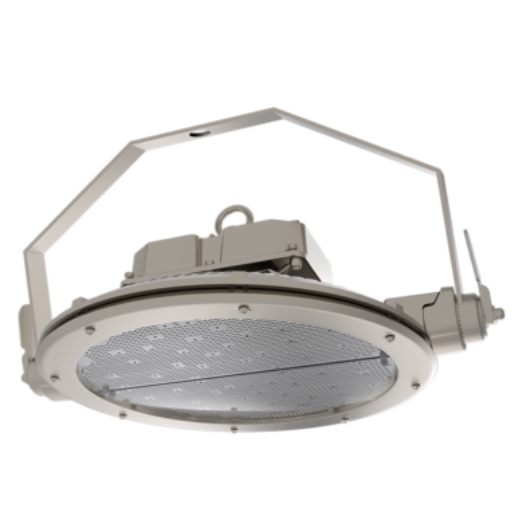
Installation of Explosion-Proof LED Lights: The installation of explosion-proof LED lights must adhere to safety protocols to ensure optimal performance and the safety of personnel in hazardous environments. The selection of the right fixture must be done according to the classification of the dangerous location. All electrical connections must be sealed tight, and no gas, vapor, or dust shall enter. Mounting and wiring shall follow the manufacturer’s recommendations and shall comprise components certified as explosion-proof only. The entire installation procedure shall be carried out by a technician or electrician qualified to work in hazardous locations, to ensure that local codes and standards are followed.
Maintenance of Explosion-Proof LED Lights: Proper maintenance is essential for maintaining the functionality of explosion-proof LED lights over an extended period and ensuring their safe use. Periodic inspections of fixtures should be conducted to check for signs of wear, corrosion, or damage to the housing and seals. Cleaning of the lens and enclosure should be done to maximize light output. Damaged components must be replaced with certified ones. Always de-energize lights before maintenance. Inspections will be conducted according to the manufacturer’s instructions. Proper maintenance helps improve the life and safety of the lights.
Installation Guidelines for Hazardous Location Lighting
To rig up hazardous location lighting, abnormally strict protocols must be followed to guarantee safety and compliance. The first step involves verifying that the lighting fixtures are certified for the dangerous classification and that the environment has been tested for the presence of flammable gases, vapors, or dust. Other considerations include the mounting location installation as specified by the manufacturer, and ensuring that no contaminant or obstacle compromises proper installation.
All electrical connections should be sealed using explosion-proof fittings or conduit systems, if applicable, to prevent the ingress of any flammable substances. Also, consider bonding all components electrically and grounding according to electrical codes as a safety measure. Furthermore, the power supply should be rated correctly for voltage to prevent use above its rated voltage or usage below the voltage it affords.
Each installation should be performed according to the manufacturer’s installation instructions, and the Local or National Electrical Code (NEC) should be verified to ensure compliance with its respective requirements. Testing the lighting system for functionality and checking the sealing and enclosures for their integrity will add an extra layer of safety. This type of verification and documentation done at the time of installation reduces any risk and ensures that the lighting performs well in hazardous locations.
Routine Maintenance and Safety Checks
To ensure the safety and efficiency of operation, I perform regular maintenance by inspecting all equipment for signs of wear, mechanical/chemical corrosion, or damage. I check for proper seals and enclosures, clean the components to prevent dirt buildup, and replace those that show signs of deterioration. Additionally, I follow a schedule of testing functions and verifying compliance with adverse standard requirements, documenting each check for later reference. In this way, I can address any potential problems before they become actual issues and maintain optimal performance in hazardous locations.
Common Issues and Troubleshooting Tips
Loose or Damaged Seals: This is mainly one Type: the loose ones, or those with seals slipping, which in turn compromise the equipment’s capacity to withstand such hazardous environments. Troubleshooting involves inspecting seals for cracks, wear, or misalignments. Where damaged seals are found, they must be replaced immediately, and the replacement must be securely mounted to ensure the integrity of the enclosure.
Corrosion on Metal Parts: Corrosion may occur due to prolonged exposure to harsh conditions. Regularly inspect metal parts for signs of corrosion, rust, or discoloration. Upon detecting corrosion, clean the rust or grind it with a rust remover, or replace the part. Another preventive measure can be the use of coating materials resistant to corrosion.
Electrical Malfunctions: Electrical malfunctions may be caused by faulty wiring or an interrupted power supply. Check all wiring connections to ensure they are securely fastened and inspect for any fraying or visible damage. Use a multimeter to measure voltage levels, and replace any component, taking into account the severity of the issue. Ensure that all repairs are completed to safety standards.
Moisture Intrusion: Moisture intrusion into enclosures can cause short circuits and equipment malfunctions. Monitor the gaskets and seals for integrity, and ensure all enclosures are properly fastened. To address moisture in the air, consider purchasing desiccant packs or a dehumidifier.
Overheating: Obstruction to air circulation or using the equipment beyond its specs are probably the causes of overheating. Verify that equipment vents are clear of dust and debris, and that all cooling equipment is operational. If overheating persists, the equipment load should be evaluated, and operating conditions may need to be modified.
Keep common issues at bay promptly with a maintenance plan in place, and your equipment will remain safe, reliable, and long-lived, even under hazardous conditions.
Reference Sources
2. The Mobile Internet-Based Explosion-Proof LED Lamp Intelligent Lighting System
3. New Solid State Technologies and Light Emitting Diodes for Explosion-Proof Equipment
Frequently Asked Questions (FAQs)
What is explosion-proof lighting for hazardous areas?
Explosion-proof lighting for hazardous areas is designed to prevent ignition of flammable gases, vapors, or dust. These lights are built to contain any explosion that might occur within the fixture, thereby protecting the surrounding environment from potential hazards.
How do I choose the right explosion-proof LED light?
Choosing the right explosion-proof LED light involves understanding the specific hazardous location classification, such as Class I Division 1 or Class II Division 2, and considering the types of hazardous materials present. It’s also important to select fixtures that comply with safety standards and are suitable for the operating conditions.
What are the benefits of using LED explosion-proof lighting?
LED explosion-proof lighting offers several benefits, including energy efficiency, longer lifespan, and reduced heat emissions. This makes them ideal for demanding industrial settings, where safety and performance are critical.
What is the difference between Class I and Class II explosion-proof lighting?
Class I explosion-proof lighting is designed for environments where flammable gases or vapors are present, while Class II lighting is intended for locations with combustible dust. Each class has specific requirements for fixture design to ensure safety in hazardous conditions.
Can LED explosion-proof lighting be used in paint booths?
Yes, LED explosion-proof lighting can be safely used in paint booths, which are classified as hazardous locations due to the presence of flammable vapors. These lights provide safe illumination while meeting the required safety standards for such environments.
What are the lighting requirements for hazardous locations?
The lighting requirements for hazardous locations include using explosion-proof fixtures that meet the classification of the area, ensuring adequate brightness for visibility, and maintaining compliance with local safety regulations. Proper maintenance and regular inspections are also essential.
How do explosion-proof lighting systems enhance safety in industrial settings?
Explosion-proof lighting systems enhance safety in industrial settings by minimizing the risk of ignition from electrical components. These systems are designed to withstand potential explosions, ensuring that the surrounding environment remains safe for personnel and equipment.
What types of hazardous materials require explosion-proof lighting?
Types of hazardous materials that require explosion-proof lighting include flammable gases, vapors, and combustible dust. Understanding the specific dangerous substances present in an area is crucial for selecting the appropriate lighting solutions.
What are the division and zone requirements for explosion-proof lighting?
Division and zone requirements for explosion-proof lighting refer to the classification of hazardous locations based on the likelihood of explosive atmospheres. Division 1 indicates a higher risk than Division 2, while Zone 0, Zone 1, and Zone 2 classifications provide a detailed understanding of the risk levels associated with different hazardous environments.

